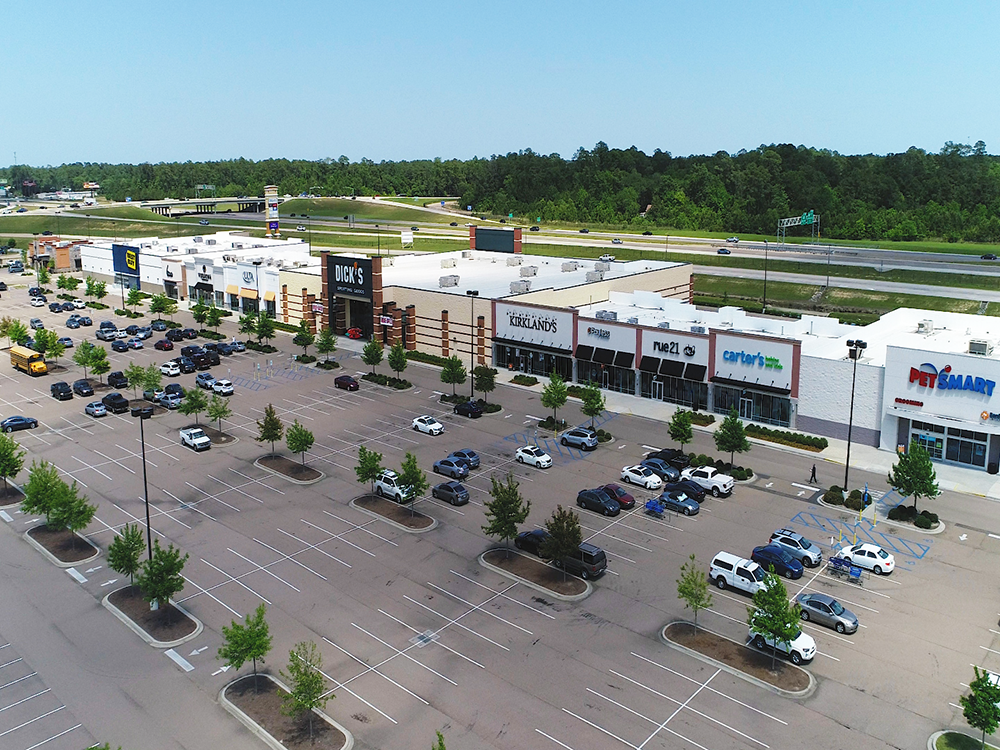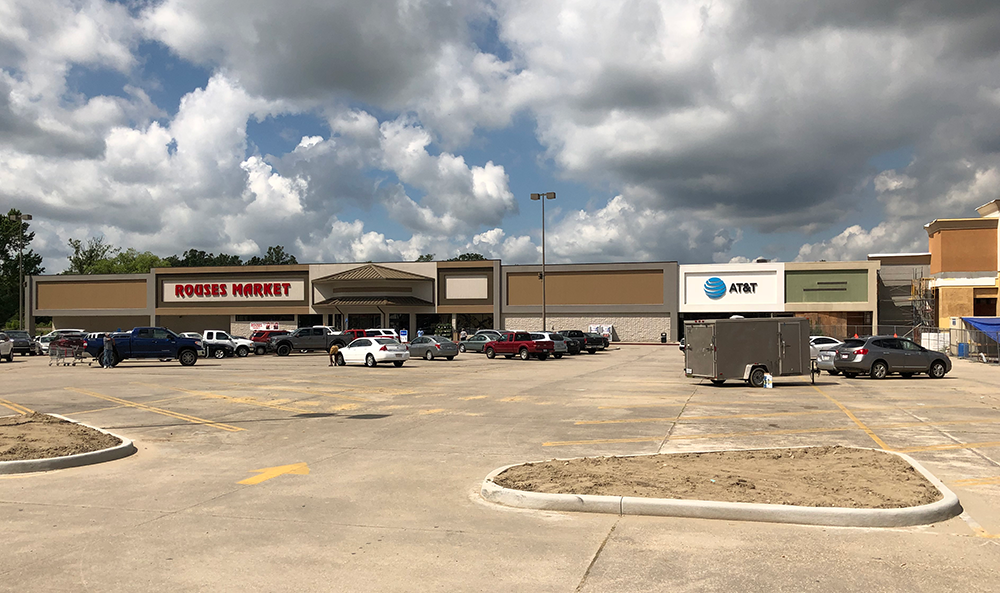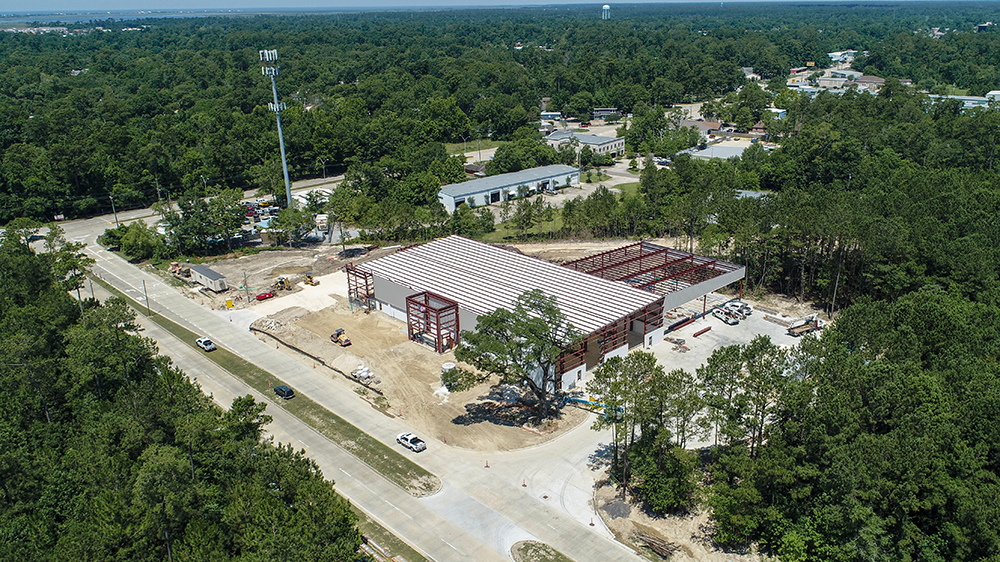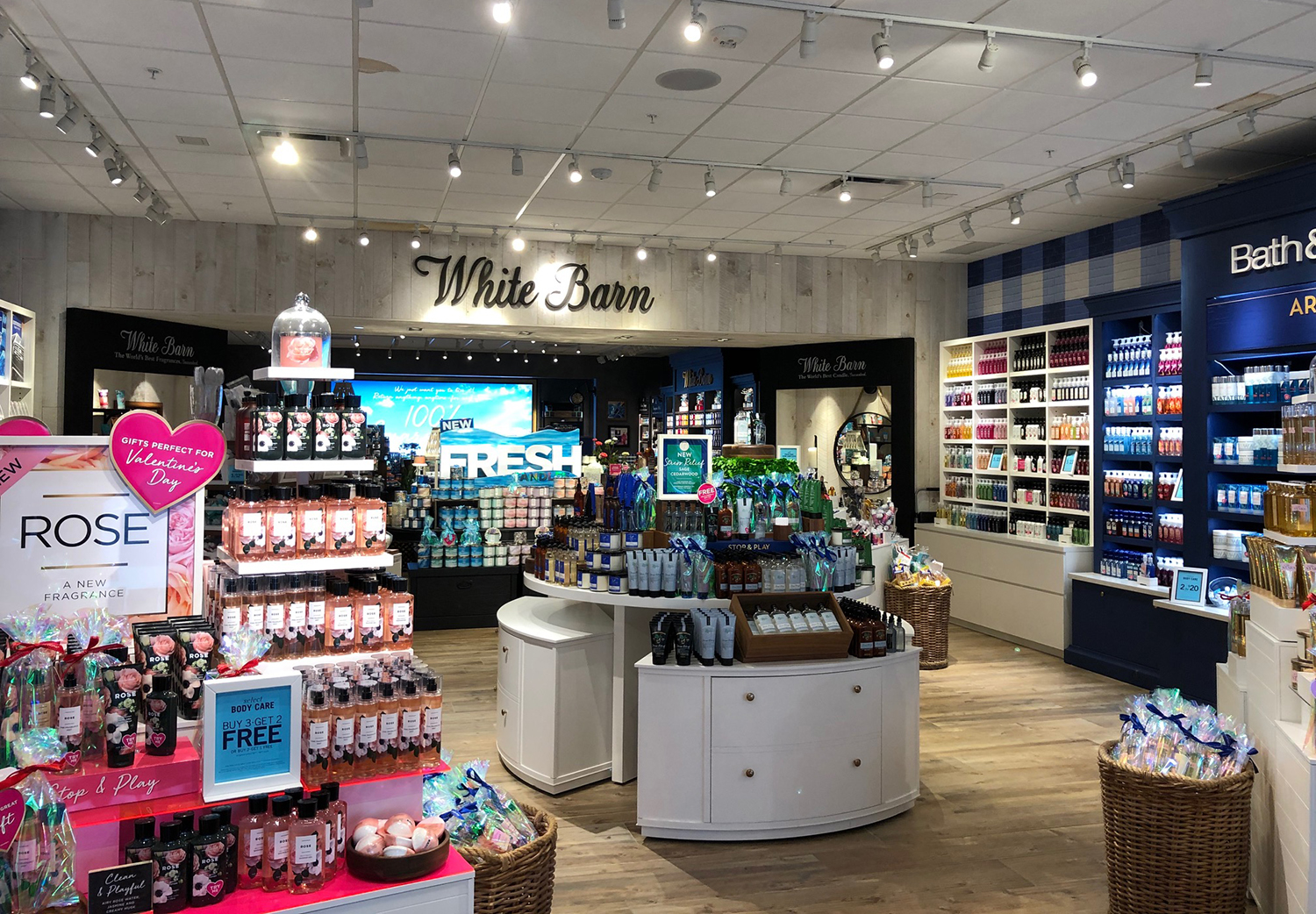Retail Site Selection & Convenience Stores
Proximity & Accessibility of Retailers
Since the beginning of time, retailers have strategically positioned themselves in a manner where they could capitalize on the disposable dollars that their target market spends.
While technology advancements have enhanced the ability for consumers to buy certain products online and have them delivered right to their doorsteps, there are still several retail sectors that cannot be replaced by e-commerce.
This blog series will outline three of those retail sectors: 1) Convenience Stores (C-Stores), 2) Fast Food Restaurants (Quick Serve Restaurants or QSRs), and 3) Drug Stores, as well as the site selection criteria they require.
I started in the commercial real estate industry in 1996. At that time, “portable” phones were in a bag that had to be plugged into a cigarette lighter, the internet was in its infancy stage, and relationships required verbal communication only.
While so much has changed over the past 23 years, three primary demographic criteria have remained a constant for market-based retailers: traffic patterns/counts, population (existing and growth) and access.
All retailers benefit from customers passing their physical stores regularly and having a location that is easily accessed. However, extensive consumer studies have caused certain retailers to apply more weight to traffic patterns and population when evaluating a market. Let me explain.
Part #1: Convenience Stores (C-Stores)
C-Stores are the one retailer that relies most heavily on traffic counts, as opposed to population. Also, C-Stores typically position themselves to take advantage of P.M. traffic patterns.
I started doing commercial real estate site selection work for a regional C-Store in 2002. The Director of Real Estate had over 30+ years of experience at the time. In one of our first meetings, when asked what the most crucial criteria were when looking for a site (outside of immediate competition), he said without hesitation, “We need to be on P.M. traffic side of the road.”
When questioned why that criteria were so crucial, he responded, “If you think about it, most people are pressed for time in the mornings. So, they will typically stop and only put enough gas in their tank to get them to work. If they have a couple of minutes to come inside and buy something, it is usually a small ticket item like coffee or a pack of cigarettes.
On the other hand, P.M. customers are typically not pressed for time. In turn, they are more likely to stop and fill up their tank. Plus, a higher percentage will come inside and buy much larger ticket items, like a 12-pack of beer, a carton of cigarettes or food for dinner.
We have done extensive studies, and our P.M. customers generate 4-5 times larger ticket sales than our A.M. customers. You do the math. That is why we will always prefer our stores to be accessible to the P.M customer.”
Over the span of several years, I sold more than 15 locations to the same C-Store. At one point, the client gave me a trade area in which to find a site. To my surprise, the trade area he provided had very minimal rooftops, at best. Besides, it wasn’t in a high-growth area.
Despite being provided the sales numbers of an existing competitor in the market, the trade area was a mystery to me. Furthermore, the trade area to choose from was on the A.M. side of the road, yet the competitor’s C-Store had the 2nd highest sales out of 65 corporate locations.
I spent the better part of the next week sitting across the street from the competitor’s store and driving the trade area, trying to determine who their customer base was. I sat and watched the A.M., mid-day and P.M. traffic patterns. The store was packed the entire day.
In addition to a railroad track eliminating the P.M. side of the road from being developed, the road was a major thoroughfare to one of two bridges that crossed the Mississippi River. As a result, customers that lived up to 10+ miles away were forced to pass the location on a regular basis.
While the immediate area had limited rooftops, the competitor’s store had record sales based on traffic count alone.
Throughout the site selection process, sometimes the criteria evolve based on a specific market area. That’s why it’s important to consult a site selection specialist who can help you analyze the area and find the ideal location for your business.
Stay Tuned for Part #2 – Fast Food Restaurants or QSRs.
For questions regarding your commercial real estate property, contact J. Collier Thornton at (225) 926-4481 or cthornton@stirlingprop.com.
Stirling Properties Names Samantha Marshall As Relationship Manager – Finance and Development

In this new role within the organization, Samantha will work to enhance the company’s investor relations, as well as play a more prominent role in securing debt and equity capital for its projects.
Samantha has been with Stirling Properties for over six years, and previously held the role of Paralegal / Document Manager. While she will be responsible for many of the same functions, she will also be handling new and expanded duties.
As Relationship Manager – Finance and Development, Samantha will continue to coordinate loan closings and remain point person with lenders, guarantors and investors. In addition, she will have more involvement with Stirling Properties’ lenders on the front end of securing loans for acquisition, development and refinancing. She will also be assigned various special projects within the Development Department, working directly with some of the company’s larger, long-term clients, as well as assisting with investor relations and equity raising as Stirling Properties continues to grow.
Samantha Marshall will work from Stirling Properties’ Covington, Louisiana, office. She can be reached at smarshall@stirlingprop.com or (985) 246-3726.
Stirling Properties’ 3rd Quarter Portfolio Report Shows Positive Outlook
As the commercial real estate industry endures unrelenting disruption—specifically in the retail and office market segments—we have seen glimpses of a silver lining.
Despite all the headwinds and negativity swirling, Stirling Properties’ outlook is optimistic moving into the 3rd quarter of 2019 compared to this time a year ago. A recent comparison of our overall commercial portfolio revealed positive key performance indicators in total rental income, rental and occupancy rates.
Mind you, these numbers may not reflect significant increases, but they do illustrate an upward trend. In fact, almost every key metric indicated a positive gain. A further breakdown shows both our office and retail properties are performing well with occupancy rates holding steady and rental rates up slightly, contrary to the ‘apocalyptic environment’ predicted in years past.
For Stirling Properties, our portfolio achievements are not the result of a magic wand or some sort of geographical shield. We attribute our continued success to proper management of our commercial properties.
Asset and Property Management is vital for the health of an asset and can significantly affect its worth. Yes, location is important, but a property can also increase in value just from being well maintained and, of course, the opposite is true as well. Management affects tenant and customer relationships, vendor relations, public perceptions, all the things that determine a properties’ success or failure.
With our properties, we focus on keeping rents at market level and our rental stream within reasonable expectations. We don’t overleverage. We concentrate on tenancy—the right tenancy—and we use our market knowledge to tailor each asset plan. Effective managers see headwinds coming and react accordingly to proactively overcome obstacles.
Knowledge and diversity of various property types and needs, as well as industry trends, are also critical. In today’s retail landscape, we’re seeing smaller footprints, the emergence of different tenant types and shifts in consumer demands. There is steady growth in the healthcare and industrial industries, and in some cases, they are merging with retail. In the office sector, users are looking for less square footage, more collaboration with open floor plans, and innovative trophy projects.
These trends in the commercial industry increase the need for more curated properties. Stirling Properties’ in-house operating, leasing and development resources allow us to be more strategic and forward-thinking with our managed properties. If a property is in a great location but is struggling with tenancy, perhaps a redevelopment would be effective. Does the building lack visual appeal, have a maintenance problem or even a marketing problem? Whatever the case, Stirling Properties’ comprehensive spectrum of services can tackle it.
Look at our current redevelopment of Cornerview Plaza in Gonzales, Louisiana. This retail center is in a great location but was struggling to backfill a nearly 90,000-square-foot vacancy left by its former anchor, Kmart. Stirling Properties’ team consisting of Asset Management, Development, Leasing and Financing worked with the Property Owner to redevelop the space into a multi-tenant, upscale Retail Center. We secured favorable financing for the ownership. This gave us the ability to move forward with an aggressive redevelopment plan, bringing on Marshalls, ULTA Beauty, Ross Dress for Less, Five Below and Aspen Dental to fill one-time anchor space, joining the existing grocery-anchor, Rouses Market, and AT&T.
Another notable example is DANA Incorporated. Our Leasing Team was enlisted to help the corporation locate an industrial space in the market for the relocation and expansion of their service and assembly center. After realizing their specific space needs, our Development Team was brought in to present build-to-suit options. We were able to help them locate land and manage the development of their new facility designed with ample flex space to meet their needs and accommodate future expansion.
Our all-inclusive approach showcases our diverse range of services we offer to our clients, allowing us to maximize the full potential of every property. And that commitment and dedication to our portfolio are reflected through consistent positive gains in leases, occupancy rates, rental rates and income.
Stirling Properties’ experienced management team serves more than 20 million square feet of property across the Gulf South, including some of the largest commercial properties in the Region. We fully understand geographic markets, diverse property types, a property’s unique requirements and marketability, specific financial situations, ownership goals and tenants’ needs. We consistently focus on cost-efficient operations and explore innovative concepts to improve the value of each asset. We pride ourselves on delivering results through diligence, professionalism, accountability, and good old-fashioned work ethic!
Now, all of this is not to say that more disruption and headwinds aren’t looming around the corner, but I am confident that we are prepared to handle it.
If you have any questions about your property or would like to discuss Asset Management options, please feel free to reach out.
How Do I Calculate the Value of My Commercial Real Estate Property?
Whether you are looking to buy or sell a commercial real estate property, it’s important to be very clear on its value. Value is defined as the most feasible price the property could reasonably earn in an active, open, and competitive market when the transaction is approached fairly and knowledgeably by both buyer and seller. There are three different approaches that are typically used to appraise a commercial property and choosing the right method for your particular investment is essential to ensuring that it is priced correctly. Let’s look at these three approaches separately.
The Income Approach
Also referred to as the Income Capitalization Approach, this tactic is the one most commonly used in commercial real estate transactions. The value is established here by estimating the property’s income using the capitalization rate (commonly referred to as merely the cap rate). The cap rate is the net operating income of the property divided by its current market value (or sales price).
An example might look something like this: Take a property with a gross potential income of $500,000, subtract a 10% vacancy factor of $50,000 and you will be left with an effective gross income of $450,000. Deducting from this the operating expenses of the property (we’ll say $150,000) will help you to arrive at a Net Operating Income (or NOI) of $300,000. Divide this by the cap rate (8%), and you will come to your fair market value price of $3,750,000.
The Replacement Cost Approach
Frequently shortened to The Cost Approach, this is a much more complicated route of valuing commercial real estate properties. It first considers the value of the land on which a building exists (value without the inclusion of the building). It then factors in what costs would be incurred to build an exact reproduction of the current existing building and adds that number onto the land value. Lastly, the depreciated value is considered, and the actual property value number adjusted accordingly.
The Market Value Approach
Sometimes called the Sales Comparison Approach or the Comparable Approach, the Market Value Approach is quite arguably the simplest method to determine the value of a commercial real estate property. This type of method compares the property in question to other properties of similar use and size, which have been sold or placed on the market in the surrounding area. A range of value is established from the findings of the market research, and from there, the number is adjusted based on the physical characteristics of the property being valued.
Factors that will likely be considered are discrepancies in the dates of the sale, age and condition of the property, square footage of the actual building and size of surrounding land, location, land to building ratio, local tax policies, and other physical characteristics based on the importance they hold in the current market and the effect they have on the particular property being valued. Basically, this number is determined by what a purchaser is likely willing to pay in an open, fair, and competitive market at any given time. A buyer may put a less or greater personal value on a property based on how it serves their needs, but this is an easy way to determine a baseline to begin negotiations between two parties.
Which Approach is Right for Me?
Now that you have a much clearer picture of each of these fundamental valuation tools, you may be wondering which method is right for your commercial real estate property. The short answer is that each of these modalities is valuable depending on your situation. For example, it’s going to be harder to determine cap rates and comparable selling prices for a property that is located further away from similar properties; in which case, The Replacement Cost Approach may make the most sense. If you have access to the data needed to determine the cap rate, The Income Approach will be sufficient. If you have a property where vacancy rates fluctuate (such as a multifamily building), this may not work out so well; in which case, you might consider The Market Value Approach of using comparables.
Looking for Commercial Real Estate in the Gulf South region?
If you’re ready to sell your commercial real estate property or looking to invest, it’s imperative that you are clear on a property’s actual worth. Working with a professional can help you avoid mistakes and pitfalls. At Stirling Properties, our experienced team of commercial advisors is here to make your venture a success. With offices throughout Louisiana, Mississippi, Alabama and the Florida Panhandle, we have specialists in all aspects of commercial real estate including retail, office, industrial, healthcare and multifamily sectors. You can’t go wrong having us on your side. Please take a look at our extensive database of commercial properties and contact one of our expert team members today!
Bath & Body Works Celebrates Grand Re-Opening at Premier Centre
Renovation & Expansion To Include New White Barn Shop.
Bath & Body Works at Premier Centre in Mandeville is celebrating its grand re-opening on Friday, May 10th—just in time for Mother’s Day! If you love Bath & Body Works, get ready for a renovated and expanded store format that will include the addition of its White Barn concept. Stop by this weekend for exclusive Mother’s Day sales and specials.
White Barn, a sister company of Bath & Body Works, features signature candles and home fragrances. The line is exclusively sold through Bath & Body Works, and the new combination store concept will offer a more extensive variety of product offerings.
Bath & Body Works is located at Premier Centre on the corner of Highway 190 & N. Causeway Boulevard, next to Whole Foods Market in Mandeville. The store temporarily closed its doors for more than two months to complete the buildout and 1,538-square-foot expansion into part of the adjacent former Hallmark space. The new store format is part of a company-wide effort by Bath & Body Works to incorporate the popular candle and fragrance line into its existing storefronts.
Stirling Properties also recently welcomed the White Barn concept to Bath & Body Works stores at Fremaux Town Center in Slidell and River Chase in Covington. Stirling Properties is proud to continue to deliver quality retailers and shopping center developments to the Gulf South region!









